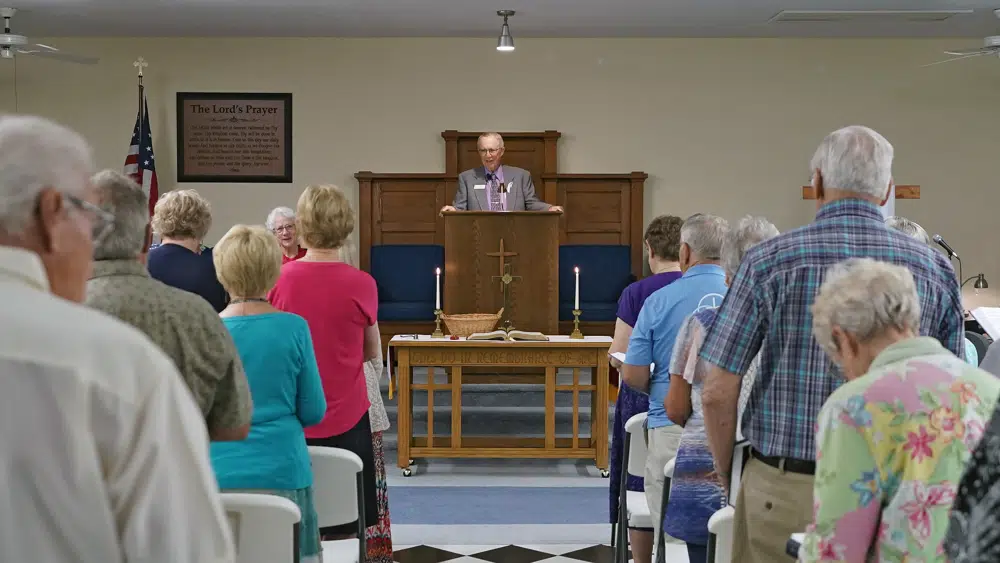In the midst of impassioned theological debates and discussions surrounding LGBTQ inclusion, thousands of United Methodist congregations across the nation have been forced to make a difficult choice: to stay or to leave. The United Methodist Church, one of the largest denominations in the United States, finds itself divided on critical issues such as recognizing same-sex marriage and ordaining LGBTQ clergy. This division, however, is not only evident between congregations, but also within the very pews of individual churches, as longtime worshippers now find themselves on opposite sides of this ideological chasm.
For those congregations that have chosen to disaffiliate, the decision has been met with deep sorrow and tension. In response, new initiatives have emerged, offering havens for the displaced faithful. Regional conferences have started designating “Lighthouse” congregations—places that wholeheartedly embrace those who wish to remain United Methodist, even after their former churches have voted to leave. These sanctuaries, sometimes referred to as “Beacon” or “Oasis” communities, extend a reassuring message to newcomers: the United Methodist Church is still here and remains committed to welcoming all.
“The pain is real, and there is a lot of grief and heartache over the split in the United Methodist Church,” acknowledges the Rev. Lynda Ferguson, a great-grandchild of a circuit-riding Methodist pastor. Her own church, First United Methodist Asheboro in North Carolina, has become one such Lighthouse congregation. With over 400 congregations disaffiliating in North Carolina alone, the need for welcoming spaces has become all the more apparent.
The Rev. Ed McKinney, pastor of Stokesdale United Methodist Church in North Carolina, also recognizes the importance of providing a safe harbor. Stokesdale has transformed into a Lighthouse congregation, offering solace to newcomers like Michael Hahn and his family. Despite their previous church’s departure from the denomination, Hahn, whose family has a longstanding Methodist background, couldn’t fathom leaving a faith community that values the integration of faith and rationality. In the warm embrace of the Stokesdale congregation, he has found a sense of belonging and support during this challenging period.
While some departing churches have chosen to align with the conservative Global Methodist Church, a new denomination established last year, others have opted for independence or joined different faith traditions. The Global Methodist Church, though lacking a specific program like the Lighthouse initiative, has begun launching or adopting congregations that serve as welcoming homes for those wishing to leave the United Methodist Church while remaining in their current congregations.
This ongoing schism within the United Methodist Church has been years in the making. With approximately 6.5 million members in the United States and an equal number abroad, the denomination has long wrestled with issues surrounding same-sex marriage and the ordination of openly LGBTQ clergy. While the bans on these matters have been repeatedly upheld, predominantly through the votes of more conservative churches abroad, growing defiance within U.S. churches has prompted the formation of a new denomination by conservatives seeking a different theological stance.
According to the United Methodist News Service, over 3,500 U.S. congregations have received permission to disaffiliate from the UMC, a number that is expected to approach 4,000 by the end of the year. However, these departing congregations represent only a fraction of the 30,000 United Methodist churches nationwide, albeit some of the largest in their respective states. The Rev. Jay Therrell, president of the Wesleyan Covenant Association, a conservative group advocating for departing congregations, supports the idea of Lighthouse communities, but emphasizes the importance of allowing churches to disaffiliate on reasonable terms, ensuring that each theological perspective finds its most fitting home.
In regions like Arkansas and Western Pennsylvania, where numerous churches have sought disaffiliation, efforts have begun to create Beacon and Lighthouse congregations, respectively. The aim is to extend hospitality and healing to those displaced by the division. These spaces not only provide temporary refuge for those searching for a new spiritual home but also offer opportunities for creative outreach, engaging with unchurched individuals, and meeting the needs of their communities.
As the United Methodist Church continues to grapple with these profound challenges, the emergence of Lighthouse congregations stands as a testament to the enduring spirit of inclusivity and the resilience of faith communities. It is a beacon of hope for those navigating the difficult waters of theological differences, offering solace, support, and the promise of a place to belong.

